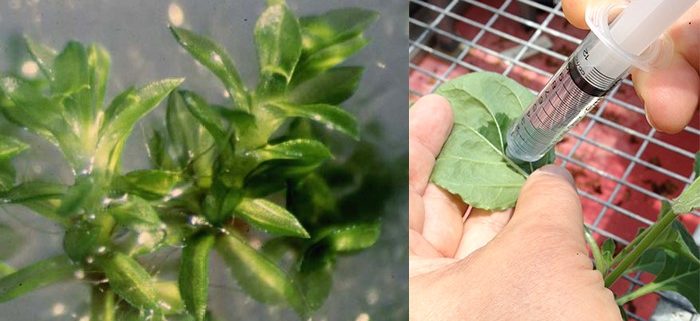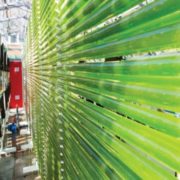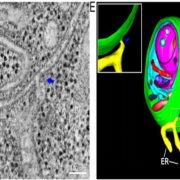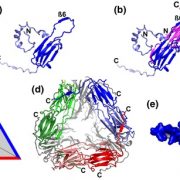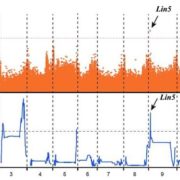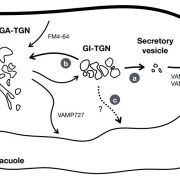High Fiber Research: A Moss Arabinoglucan Synthase
Roberts et al. investigate cell wall synthesis in Physcomitrella patens. The Plant Cell (2018). https://doi.org/10.1105/tpc.18.00082.
By Alison Roberts and Eric Roberts
Background: The health-promoting soluble fiber in whole grains is rich in mixed-linkage glucan (MLG), so called because it consists of glucose joined through both 1,4- and 1,3-linkages. MLG is soluble because these linkages are distributed irregularly along the polysaccharide chain, so scientists want to understand how the enzymes that make MLG control linkage placement. MLG is common in cereals, but it is not found in most other flowering plants. Some seedless plants and algae make MLGs with distinct arrangements of 1,4- and 1,3-linkages. These plants do not have genes like those that encode cereal MLG synthases. So, it appears that MLG synthesis had a complex evolutionary history that may help us understand how variations in synthases affect the structure of the polysaccharides they produce.
Question: Our discovery that a gene from the moss Physcomitrella patens resembles a known fungal MLG synthase gene led us to ask whether the moss gene also encodes an MLG synthase. To find out, we transformed the moss gene into a wild tobacco plant that normally makes no MLG, but is especially good at expressing foreign proteins. We treated the cell walls from the transformed tobacco with two enzymes that digest MLG and looked for the cell wall fragments that these enzymes usually release.
Findings: The enzyme that digests only MLG (lichenase) did not release fragments from the tobacco cell walls. The less specific enzyme (b-glucanase) released fragments, but they were not the ones we expected. They contained 1,4-linked glucose and 1,3-linked arabinose. Because the b-glucanase did not release fragments from control tobacco, we knew that the fragments had come from a polysaccharide produced by the moss enzyme. Although it contains 1,4- and 1,3-linked sugars like MLG, this polysaccharide differs from known plant cell wall polysaccharides and we named it arabinoglucan.
Next steps: We found genes that encode proteins similar to the moss arabinoglucan synthase in algae and seedless plants, including some that are known to make MLG. By testing the activities of these proteins, we can learn more about how enzyme activities evolve and how synthase variation is related to polysaccharide structure.
Alison W. Roberts, Jelle Lahnstein, Yves S. Y. Hsieh, Xiaohui Xing, Kuok Yap, Arielle M. Chaves, Tess R. Scavuzzo-Duggan, George Dimitroff, Andrew Lonsdale, Eric Roberts, Vincent Bulone, Geoffrey B. Fincher, Monika S. Doblin, Antony Bacic, and Rachel A. Burton. (2018). Functional Characterization of a Glycosyltransferase from the Moss Physcomitrella patens Involved in the Biosynthesis of a Novel Cell Wall Arabinoglucan. https://doi.org/10.1105/tpc.18.00082.


